
Fortress Kamerlengo
Removed from Unnamed collection



+ 3


Source: FiveLands Travel Images may be subject to copyright. Learn More
Nestled at the western tip of the charming Trogir islet, Fortress Kamerlengo stands as a testament to Venetian ingenuity. Constructed between the 13th and 15th centuries, this imposing structure once served as a strategic naval base, safeguarding Venetian interests in the Adriatic. Named after the town magistrate, Camerarius, the fortress now buzzes with life as a vibrant cultural hub. It's not just a relic of the past; today, it hosts an open-air cinema and a stage for an array of cultural events that light up the night.
Exploring Fortress Kamerlengo is like stepping back in time, where history whispers through its ancient stones. Climbing to the top offers breathtaking views of Trogir and the shimmering Adriatic Sea, a sight that captures the heart of every visitor. On a warm summer evening, there's nothing quite like catching a film under the stars or enjoying a live performance surrounded by history. Whether you're a history buff or a culture enthusiast, this fortress is a must-visit, offering a unique blend of the old and new that truly captures the spirit of Trogir.
You may also be interested:
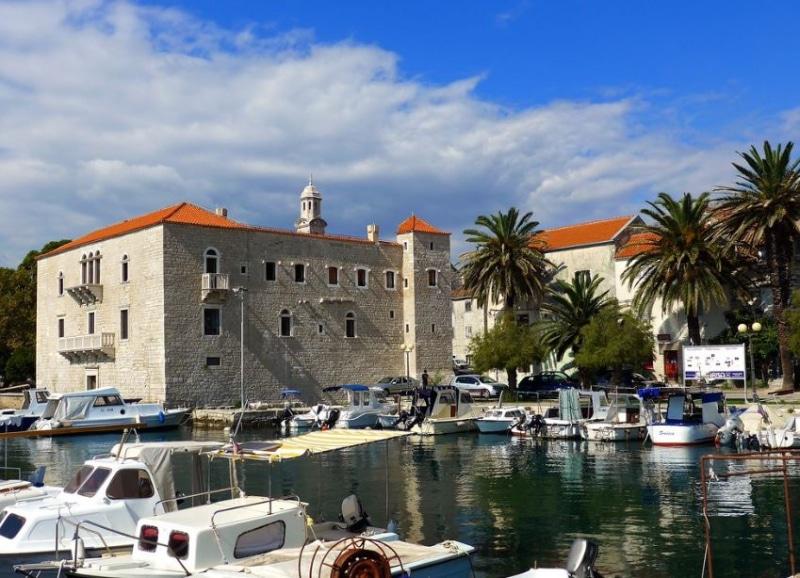
Removed from Unnamed collection
Trogir City Museum 
Nestled in the heart of Trogir, the charming Trogir Museum opened its doors in 1966. It's housed in an enchanting complex of palaces and houses that have belonged to the Garagnin-Fonfogna family since the 18th century. As you step inside, the first room greets you with a captivating glimpse into ancient history. Here, you'll find a late Greek relief titled "Woman at Work" from the 2nd to 1st century BC, alongside a replica of Kairos from the 4th to 3rd century BC. The room also showcases prehistoric artifacts from the Trogir area, as well as fragments of ceramics and glass from the Greek period. Moving forward, the museum paints a vivid picture of the Roman era. Discover treasures unearthed from graves, including helmet fragments, ancient coins, amphoras, and urns. Stone reliefs and archaeological finds from the Trogir vicinity further enhance the narrative of this fascinating past. In the larger hall, bathed in light from a stunning three-light window, the medieval spirit of Trogir comes alive. Here, you'll encounter documents detailing the evolution of the autonomous commune. Among the highlights is the first printed city Statute from 1708, which surprisingly governed public life as early as the 14th century. The city seal rings and original minutes from the City Council sessions dating back to 1316 offer a tangible connection to history. The museum also houses significant documents on parchment and Venetian coins once circulated in Dalmatia and Albania. One standout piece is Ivan Lucic's "De Regno Dalmatiae et Croatiae," a medieval Croatian masterpiece published in Amsterdam in 1666. Don't miss the matricula of the All Saints brotherhood from 1573 and the gripping memoirs of Koriolan Cipiko, which recount the Venetian-Turkish war of 1477. As you wander through this historical gem, you'll feel the layers of time and culture enveloping you. The museum is not just a collection of artifacts; it's a storybook of Trogir's rich past. Take a moment to soak in the atmosphere, and imagine the lives of those who once walked these ancient streets.
Map
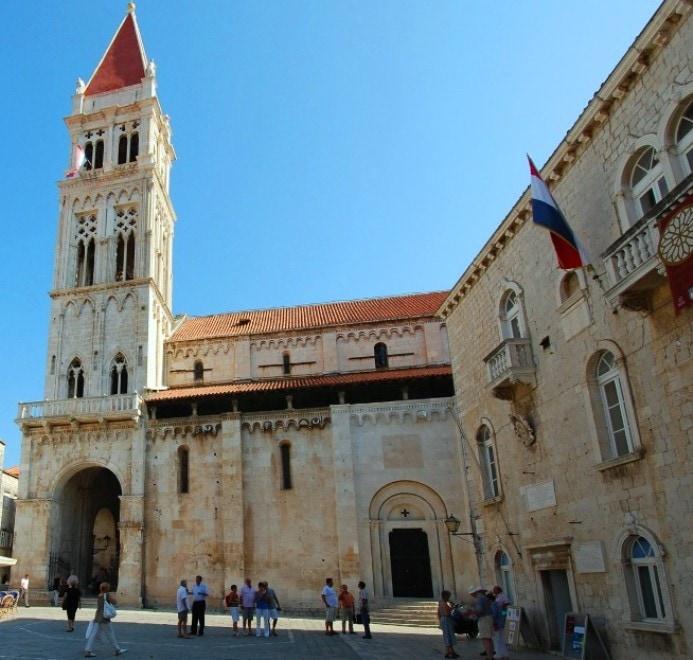
Removed from Unnamed collection
Chatedral of St Lawrence 
In 1903, while workers were busy with structural repairs on the bell tower's foundations, they stumbled upon a fascinating piece of history: an altar dedicated to Hera. This discovery sparks the imagination, suggesting that today's cathedral might stand on a site that once hosted a shrine from the Greek and Roman eras. Picture the layers of history beneath your feet as you stroll through the charming streets of Trogir, Croatia. It's like stepping into a time machine where ancient myths and modern life blend seamlessly. The cathedral itself is a stunning example of Romanesque architecture, and exploring its intricate details is a must for any history enthusiast. As you wander, take a moment to envision the vibrant life of the ancient societies that once thrived here, adding a rich, historical dimension to your visit.
Map

Removed from Unnamed collection
The large Cipiko palace 
Father and son duo, Petar and Koriolan Cipiko, had quite the knack for family planning. With strategic marriages and a bit of foresight, they managed to claim the entire western side of the main square in Trogir with their two impressive palaces. These grand structures stand proudly opposite the council chamber, the cathedral, and other significant public buildings. The Cipiko palaces are adorned with a remarkable number of family coats of arms, hinting at their princely ambitions. Trogir, a charming Croatian town nestled along the Adriatic coast, is a delightful blend of history and architecture. It's like stepping back in time as you wander through its narrow, cobbled streets. The town's UNESCO World Heritage status is well-deserved, with its medieval architecture and stunning views over the shimmering blue waters. Whether you're a history buff or a casual traveler, Trogir's timeless allure makes it a must-visit destination.
Map
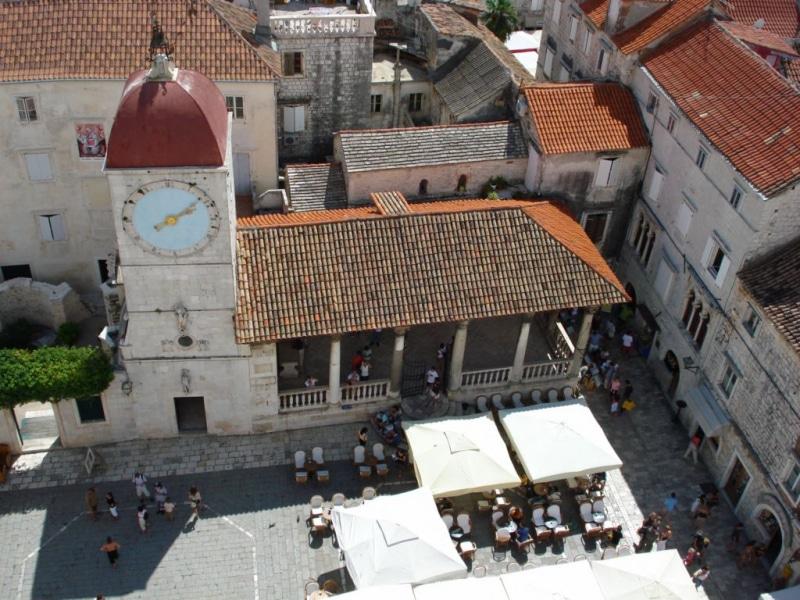
Removed from Unnamed collection
The main city square 
The transformation of Trogir's main city square, which stands where the Roman forum once did, kicked off back in the 1300s. This historic project began with the building of the commune's loggia and the council chamber. Today, the square is a bustling hub where history and modern life beautifully intertwine. It's a place where you can feel the echoes of the past while enjoying the vibrant energy of present-day Trogir. Whether you're sipping coffee at a local café or exploring the architectural marvels, there's a unique charm that captivates every visitor.
Map

Removed from Unnamed collection
Split Archaeological Museum 
The Split Archaeological Museum, Croatia's oldest museum, has a captivating history that's intertwined with the country's rich cultural tapestry. Founded in 1820 by the decree of the Dalmatian government in Zadar, it owes its inception to a special visit by Emperor Francis I to Dalmatia in 1818. This journey included stops in Split and Solin, sparking the idea to create a place to preserve and celebrate the region's artifacts. The original museum was built in 1821 right next to the eastern walls of Diocletian's Palace. However, with an ever-growing collection, it quickly outgrew its initial space. A pivotal figure in the museum's history is Father Frano Bulić, who took the helm as director in 1884. Born in Vranjic in 1846 and passing away in Zagreb in 1934, Father Bulić was more than just a Catholic priest. His passion for archaeology, history, and conservation made him a leading figure in these fields for over half a century. He dedicated his life to field research, conservation efforts, and writing, leaving a lasting impact on the study of archaeology in Croatia. Notably, he founded the Croatian archaeological society "Bihac" in Split in 1894. Today, the museum is not just a collection of artifacts but a lively testament to the region's past. Visitors can wander through its halls and courtyards, discovering treasures that span from prehistoric times to the Middle Ages. The museum also hosts various workshops and educational programs, making it an engaging destination for history buffs and casual tourists alike. Whether you're a seasoned archaeologist or just curious, the Split Archaeological Museum offers a fascinating glimpse into the ancient world.
Map

Removed from Unnamed collection
Church and Monastery of St. Francis 
Nestled on the western edge of the Riva, the Church and Monastery of St. Francis offer a fascinating glimpse into Split's rich history. Built on the foundations of an early Christian site, this remarkable place stands by the grave and the modest Church of St. Felix, a martyr from the era of Diocletian. Fast forward to the 13th century, and you'll find the Little Brothers of St. Francis taking residence here, adding their own layer to its storied past. Among the church's treasures, the Gothic Crucifix painted by Blaž Juraj of Trogir from the early 15th century stands out as a masterpiece. Equally captivating is the ancient sarcophagus depicting the Crossing of the Red Sea, a relic from Roman times that speaks volumes of the area's artistic heritage. Adjacent to the church, the Franciscan monastery invites you to explore its 13th-century cloister and a library that houses over 3,000 books, some dating back to the 16th century. It's a bibliophile's dream, offering a quiet sanctuary of knowledge. In addition to its architectural and literary charms, this sacred site is the final resting place for some of Split's most notable figures. You can pay your respects at the tomb of Marko Marulić, the father of Croatian literature, and admire the sarcophagus of Ante Trumbić, a prominent Croatian politician, crafted by the renowned sculptor Ivan Meštrović. As you wander through the church and monastery, take a moment to soak in the serene atmosphere. The scent of history lingers in the air, making it easy to imagine the countless stories these walls could tell. Whether you're a history buff or simply seeking a peaceful retreat, this hidden gem in Split is a must-visit destination.
Map
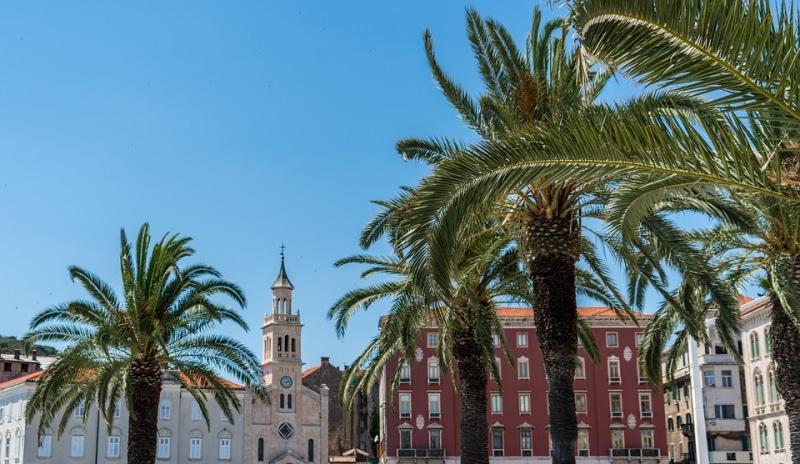
Removed from Unnamed collection
Prokurative 
Prokurative, officially known as Republic Square, is a charming spot in Split that brings to mind the elegance of Venice's St. Mark's Square. Nestled just to the west of the bustling Riva, this square is a delightful blend of history and architecture. Its name comes from the stunning arches that grace the neo-Renaissance buildings, wrapping around three sides of the square. As you stroll through Prokurative, you'll notice the lively atmosphere, often filled with street performers and local events. It's a fantastic place to relax with a coffee or gelato while soaking in the Mediterranean sun. The square also hosts a variety of cultural events throughout the year, making it a vibrant hub for both locals and tourists alike. If you're lucky, you might catch a live music performance that adds an extra layer of magic to this already enchanting place.
Map

Removed from Unnamed collection
The Riva 
The Riva, as we know it today, began to take shape two centuries ago during the Napoleonic era when the French, led by Marshal Marmont, held sway over this region. Nowadays, this iconic promenade is Split's living room, the city's most beloved and significant public space. Over the years, it has undergone several expansions and reconstructions, but it has always been blessed with a stunning backdrop: the southern facade of the Diocletian Palace. This area includes the entrance to the Substructures and is flanked by buildings constructed to the west of the Palace, along with the Franciscan monastery and the church of St. Francis. Not to mention the Bajamonti Dešković Palace and the Port Authorities building standing proudly at the east end. Today, the Riva is a pedestrian's paradise, bustling with cafés and restaurants. It's the perfect spot to savor your morning or afternoon coffee or to enjoy an evening out with friends over some drinks. The Riva serves as the stage for Split's vibrant city life. It's a venue for countless cultural and entertainment events, like the lively Split carnival. It's also where the city celebrates its sports heroes, from the legendary Goran Ivanišević to the athletes of the Hajduk football club and Jugoplastika basketball team, not to mention Olympic medalists. The Riva has historically been a political forum as well, with decades of political moments captured through mass rallies. It truly shines during Sudamja, the celebration dedicated to St. Domnius, Split's patron saint. If you're visiting, take a leisurely stroll along the promenade and soak in the sights. The Riva offers stunning views of the Adriatic Sea and is lined with palm trees that sway gently in the breeze. As you wander, you might stumble upon street performers adding a touch of local flavor to the atmosphere. It's a place where history and modernity blend seamlessly, creating an unforgettable experience for anyone lucky enough to visit.
Map
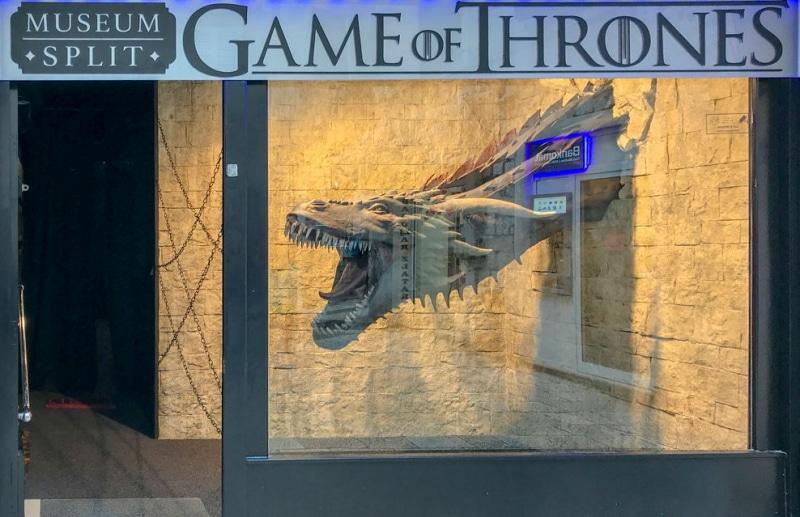
Removed from Unnamed collection
Game of Thrones Museum Split 
Step into the Museum of Game of Thrones in Split, and let your imagination run wild. The interior is nothing short of captivating: you'll find a series of prints that feel as icy as the North itself, leaving you with a sense of awe and a chill that seems to seep into your bones. Located on Bosanska Street, this museum is nestled in one of the town's charming vineyard areas. It's just a stone's throw from the iconic locations where some of the series' most memorable scenes were filmed. Not far away, you can find Diocletian's basement, famous for being the place where Khaleesi once kept her dragons in captivity. The museum entrance greets you with a dragon so life-like, it might just make your heart skip a beat. Its head dramatically pierces the wall, ears fluttering, sharp fangs bared, and eyes gleaming with intensity. It's so realistic that it could easily startle young visitors or those with a more nervous disposition. While you're in Split, take a moment to wander the historic streets, where ancient architecture meets modern life. The city offers a unique blend of history and culture, with delicious local cuisine waiting to be savored. Don't miss the chance to explore the vibrant local markets, where you can find everything from fresh produce to handcrafted souvenirs.
Map
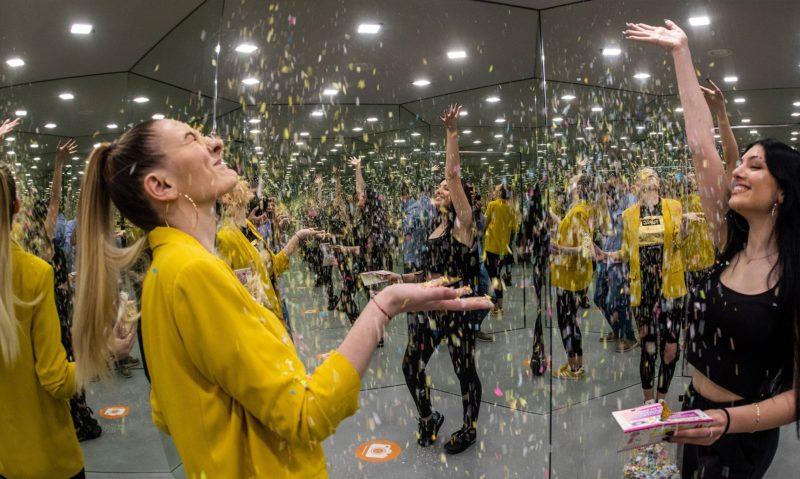
Removed from Unnamed collection
Museum of Illusions 
Step into a mesmerizing realm where your senses are constantly challenged, yet utterly captivated. Welcome to a world that will both baffle and enlighten you: the Museum of Illusions in Split. Here, nothing is as it appears, and every corner promises a delightful surprise. If you're on the hunt for a bigger and better adventure, look no further. The Museum of Illusions in Split offers a captivating blend of visual, sensory, and educational experiences. You'll encounter a myriad of new and intriguing illusions that are just waiting to be explored. This museum isn't just another stop on your itinerary. It's a social and entertaining hub that appeals to all ages. Whether you're visiting with friends or family, it's a fantastic place to create unforgettable memories. Kids will love the playful exhibits, but it's also a hit with parents, grandparents, and couples looking for something unique. Nestled in the charming city of Split, the museum is a stone's throw away from other historical sites, such as Diocletian's Palace. This makes it a perfect addition to your day's adventures. After a morning of exploring ancient ruins, the museum offers a refreshing change of pace, where history and modern creativity collide. So, are you ready to have your mind blown and your perspective shifted? Visit the Museum of Illusions in Split and prepare to see the world in a whole new light.
Map

Removed from Unnamed collection
Iron Gate 
Originally known by their Roman name, PORTA OCCIDENTALIS, these gates are one of the four key entrances that have been pulsing with life throughout Split's 17-century history. From the moment they first opened, they have silently observed the city's evolution: from the grandeur of Roman times, through the transformative Middle Ages, right up to the present day. It's fascinating how they still stand, welcoming the hustle and bustle of modern Split, with the Renaissance clock's chimes echoing through the air. Once, a relief of Nika, the Roman Goddess of Victory, adorned the lintel. Yet, by the fifth century, Christians had carved a cross there, marking their presence and faith. By the eleventh century, a quaint church, Our Lady of the Belfry, was constructed above the gate. Initially dedicated to St. Theodor, it boasts a stunning early Romanesque bell tower. During the Middle Ages, the area within the gate served as a courthouse. Until about fifty years ago, it was a bustling hub of small shops. This rich tapestry of history is palpable even today. Housing can be found nestled within the very walls of the gate, and the bell tower offers a breathtaking view of the decumanus and the People's Square, or Narodni trg. The city clock is a curious piece too, featuring 24 digits instead of the usual 12, a charming quirk that captures the imagination. Right by the gate, you'll find one of the most elegant palaces of the late Split noblemen, belonging to the Cypriani Benedetti family. Its two distinctive six-arch windows are a sight to behold. While wandering these ancient streets, don't miss the chance to explore the nearby markets. They're a vibrant mix of scents, sounds, and flavors that capture the essence of Split's everyday life. Whether you're seeking local delicacies or unique souvenirs, there's something for everyone.
Map
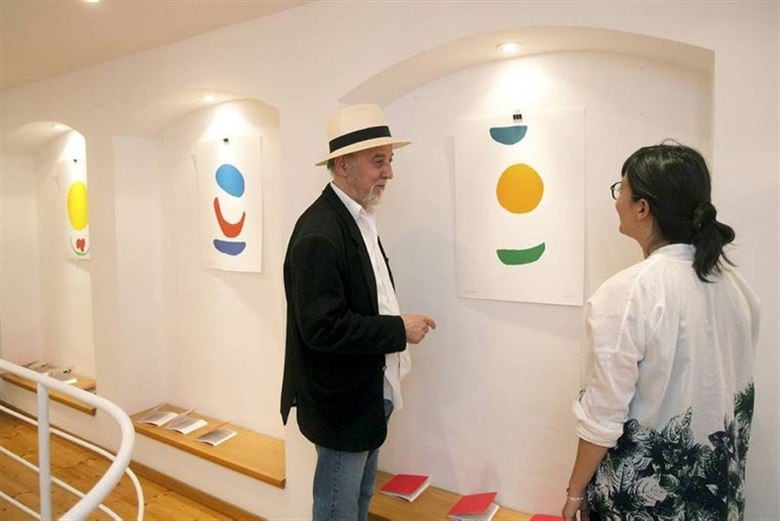
Removed from Unnamed collection
Gallery Studio Naranca 
Art Studio Naranča opened its doors in 1983, starting out as a small design studio crafting unique arts and crafts pieces. It wasn't until the early '90s, when the gallery relocated to a larger space on Majstora Jurja Street in the heart of Split's Diocletian Palace, that it truly began to blossom. This move marked a new chapter, expanding its horizons by hosting exhibitions featuring both Croatian and international contemporary artists. One of the studio's standout events is the "Splitgraphic" International Graphic Biennial, a festival that first took shape a decade ago right here at Studio Naranča. By 2011, the fifth edition of this biennial was in full swing, drawing in a crowd of art enthusiasts and showcasing the talents of esteemed artists from Croatia and beyond. Inside the gallery, you'll discover the captivating works of Pavo Majić, a graphic artist renowned for his prints and paintings. His creative flair extends to designed items that capture the imagination. Additionally, you can admire the unique jewelry crafted by Maja Mijač Majić, as well as books penned by both Marina and Pavo Majić. These items offer a glimpse into the rich cultural tapestry of Split and the creative minds that call it home. Strolling through this gallery is like stepping into a world where the past and present collide, offering a unique and inspiring experience for any visitor.
Map
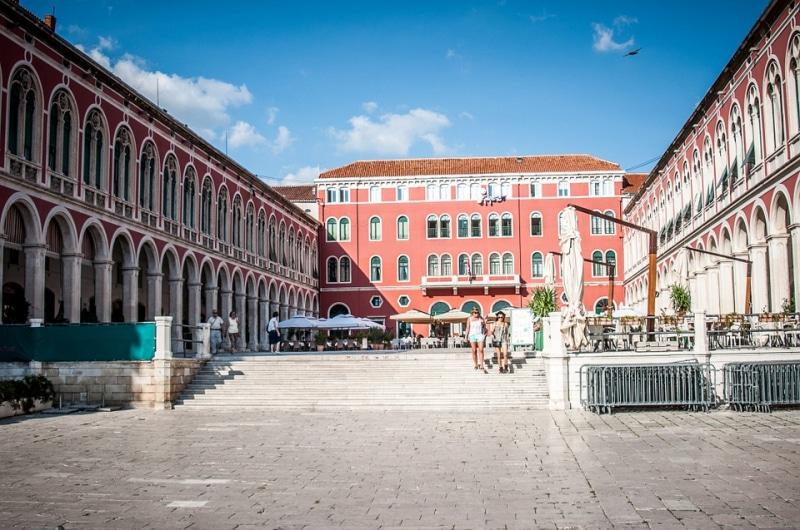
Removed from Unnamed collection
Diocletian Palace 
Diocletian's Palace stands as a testament to Roman architecture, remarkably well-preserved through the ages. This grand structure, originally constructed for Emperor Diocletian, fuses the elegance of a luxurious villa with the strategic layout of a Roman military camp, known as a castrum. The palace is cleverly divided into four sections, intersected by two main streets. It's like stepping into a historical mosaic, where each stone whispers tales of ancient times. As you wander through its labyrinthine corridors, you'll find yourself transported back to a time when emperors ruled and history was etched in stone. The palace's rich history isn't just confined to its walls. The surrounding city of Split offers an enticing blend of the old and new, where modern cafes and shops seamlessly merge with ancient ruins. It's a place where you can sip a cappuccino while imagining the footsteps of Roman soldiers echoing through the centuries.
Map
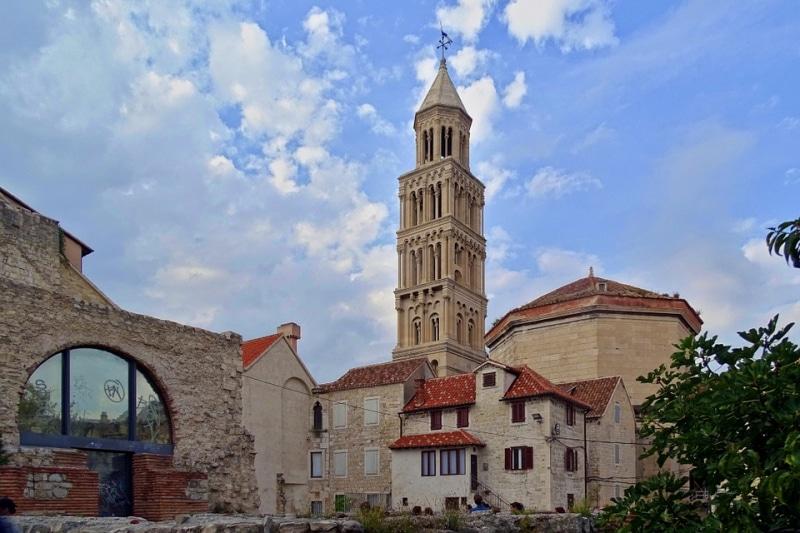
Removed from Unnamed collection
Cathedral of Saint Domnius 
Nestled in the heart of Split, the Cathedral of Saint Domnius stands proudly within the ancient walls of what was once the Mausoleum of Roman Emperor Diocletian. This remarkable cathedral is not just a stunning architectural marvel but also a living testament to the passage of time and the blending of cultures. As you step inside, you'll find yourself surrounded by echoes of history, where ancient pagan traditions, Christian Medieval influences, and modern heritage converge in a harmonious embrace. The cathedral's bell tower is a must-see, offering panoramic views of the city and the sparkling Adriatic Sea. Climbing to the top might leave you a bit breathless, but the view is worth every step. As you wander through this historical gem, you can't help but feel a sense of awe at the stories these walls could tell. The Cathedral of Saint Domnius is a place where the past and present coexist beautifully, inviting visitors to experience the rich history of Split firsthand.
Map
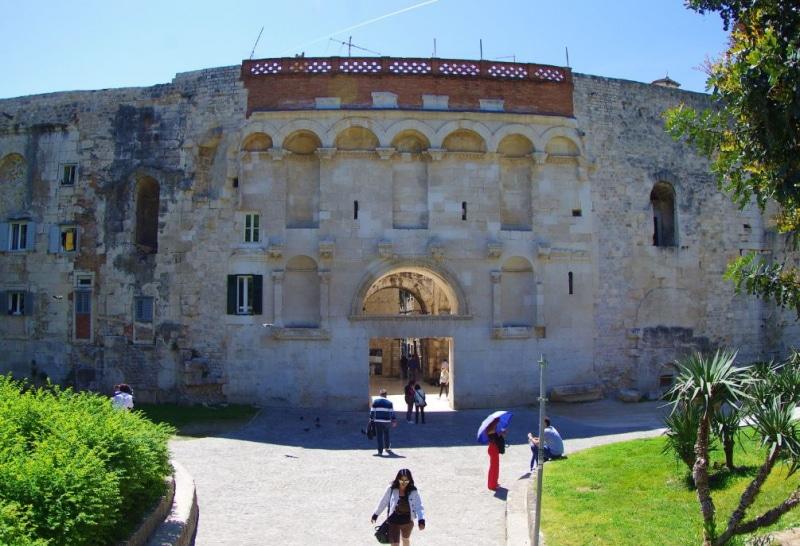
Removed from Unnamed collection
Golden Gate Split 
The ancient Romans knew them as Porta septemtrionalis. Imagine Emperor Diocletian strolling through these majestic gates on June 1, 305, as he entered his opulent palace. Crafted in a rectangular shape with sturdy double doors, these gates were designed as part of the Roman military's strategic defenses, known as a propugnaculum. The facade was adorned with niches that housed statues of the four tetrarchs: Diocletian, Maximian, Galerius, and Constantius Chlorus. These gates formed a direct route from the Peristyle, through Cardo street, leading straight to Salona, the capital of the Roman Province of Dalmatia. Back then, only the emperor and his family had the privilege to pass through them. Today, these historic gates, alongside the nearby monument to Bishop Gregorius of Nin (Grgur Ninski) created by the renowned Croatian sculptor Ivan Meštrović, are among the most beloved tourist attractions in Split. The statue of Grgur Ninski is said to bring good luck if you rub its big toe, a tradition many visitors enjoy participating in. Under Venetian influence in the 16th century, the gates were renamed Porta Aurea, or the Golden Gates, a name that has persisted to this day. It's fascinating how history and culture intertwine here, making these gates a must-see for anyone visiting Split. Whether you're a history buff or just love a good story, the Golden Gates offer a peek into the grandeur of ancient Rome right in the heart of Croatia.
Map
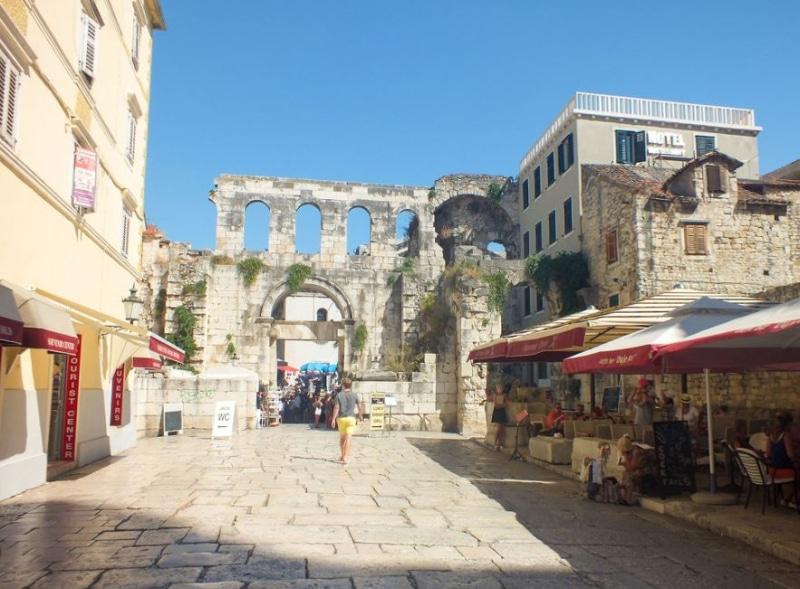
Removed from Unnamed collection
Silver Gate 
Porta Orientalis, a name echoing from the Roman era, served as the eastern entrance to the grand palace. This route led travelers along the main street, known as the decumanus, all the way to the Iron Gate and Pjaca, the bustling heart of the city square. The Silver Gate, while less ornate than the Golden Gate, holds its own charm. It remained closed from the Middle Ages until 1952, reopening after a significant reconstruction during the demolition of the Baroque church, Dušica. Flanking this gate are the remnants of octagonal towers, which hint at the architectural splendor and strategic control once exercised over the city's entrances. As you stroll through these gates today, you tread on the very stones of the ancient pavement of the decumanus. Imagine the footsteps of Diocletian's subjects who walked here centuries ago. The Silver Gate has a special place in recent history too: in 2000, it played host to a momentous event for Split's Catholic community when Pope John Paul II passed through, captivated by the beauty of St. Domnius Cathedral, where he later offered prayers. Split itself is a city that effortlessly blends the ancient with the contemporary. Just a short walk from the Silver Gate, you'll find lively cafes and shops nestled among historical ruins. The juxtaposition of old and new creates an atmosphere that's both dynamic and steeped in history, making it a must-visit for any traveler seeking a unique experience.
Map

Removed from Unnamed collection
Atelje Vasko Lipovac 
Nestled in the heart of Croatia, the gallery dedicated to Vasko Lipovac is a treasure trove for art lovers. This space showcases a rich collection of contemporary sculptures, paintings, and other works by the namesake artist. Vasko Lipovac, a Croatian creative powerhouse, was a painter, sculptor, printmaker, designer, illustrator, and scenographer. His influence in the region is profound, renowned for his minimalist style and daring color choices that often play with intense, unmodulated hues. Lipovac's artistic journey is fascinating. While he dabbled in geometric abstraction during his early years, he remained devoted to figuration throughout his career. His dedication is evident in the sheer volume of his work. Lipovac's versatility knew no bounds; he was adept at transforming materials like high-polished metal, polychromous wood, enamel, terracotta, and even polyester into stunning sculptures, reliefs, and mobiles. When you visit the gallery, prepare to be captivated by the bold and vibrant expressions of Lipovac's unique vision. The gallery not only offers a chance to admire his work but also provides insight into the cultural heritage of Croatia. It's a must-visit for anyone interested in art that challenges and inspires.
Map
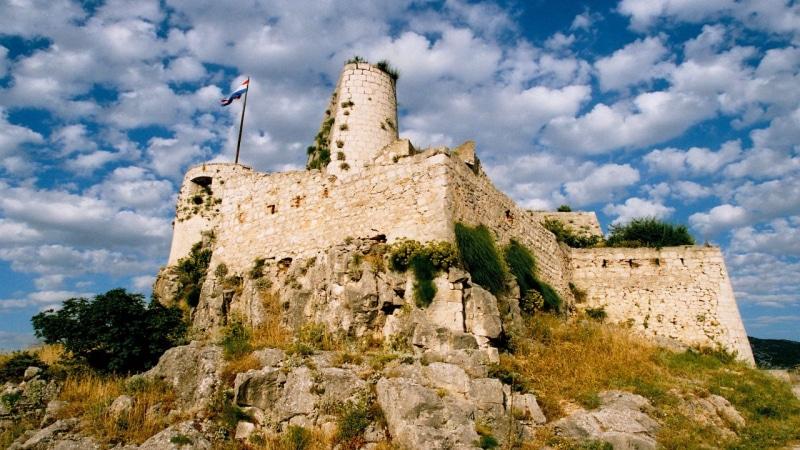
Removed from Unnamed collection
Klis Fortress 
Perched on the steep cliffs of the gorge between Kozjak and Mosor, the Klis Fortress stands with a commanding view, one eye gazing at the sea and the other watching over Zagora. This fortress was established in a remarkable strategic position, allowing for both military and commercial oversight of the entire Klis Valley, as well as the regions of Salona and Split. Due to its significance, Klis was often hailed as the key to Dalmatia and the heart of the medieval Croatian kingdom. The earliest traces of settlement around the Klis Fortress come from the Krčina cave, where ceramic pottery was discovered. This pottery, with its unique imprinted designs, belongs to the Impresso culture, which flourished from 6000 to 4500 BC along the Adriatic coast. Although much about the people of that era remains a mystery, it's possible that these early inhabitants were among the first to practice agriculture on the Adriatic coast. The first identifiable inhabitants of this area were the Dalmatians, an Illyrian tribe. They settled from the river Krka to the Neretva, including the region along the river Jadro, known today as Solinčica beneath Klis. The Dalmatians strategically built their forts on natural elevations to fend off potential attackers. At the base of the Klis Fortress, remnants of such a settlement have been found, serving to control the passage between Kozjak and Mosor. Along with other nearby forts, the hill below Klis managed access to Illyrian Salona and the mouth of the river Jadro. This strategic role continued with every subsequent structure built on this site. Today, visitors can wander through the fortress and imagine the echoes of history resonating within its ancient walls. The breathtaking views alone are worth the visit, offering a panorama that stretches from the rugged mountains to the shimmering Adriatic Sea. It's a place where you can feel the pulse of history and the whispers of the past in every stone.
Map
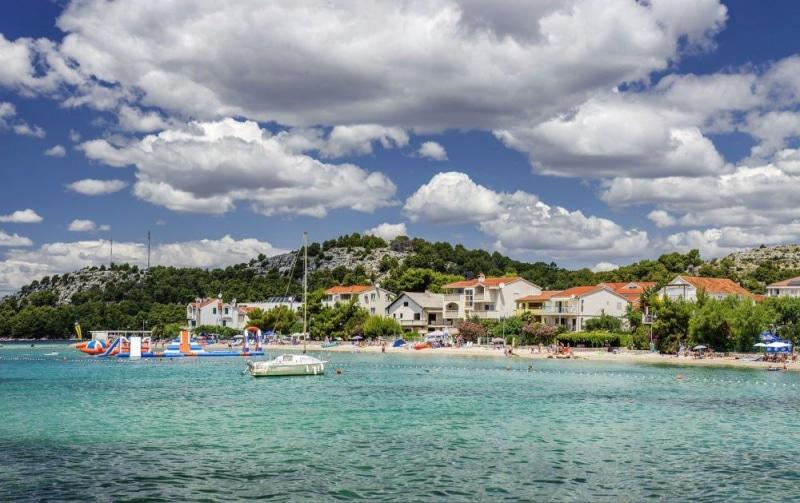
Removed from Unnamed collection
Zaboric 
Zaboric is a charming little gem of a settlement, tucked away just ten kilometers south of the historic town of Šibenik. This quaint spot boasts a stunning coastline that promises pure relaxation and fun. Picture yourself basking under the sun on its beautifully manicured beaches, where the sands meet the sea in perfect harmony. The beaches are a mix of natural sandy stretches and thoughtfully designed spaces, making them perfect for a leisurely swim or a lazy afternoon. The local dining scene is a real treat, with most eateries conveniently located by the waterfront. Imagine savoring fresh seafood with the gentle sound of waves as your soundtrack. And if you're up for a bit of adventure, the long coastal walking trail is your go-to for a refreshing jog or a scenic bike ride. This path offers breathtaking views of the Adriatic and is a favorite among both locals and visitors. Did you know? Zaboric is also known for its friendly community vibe and occasional local festivals, giving you a taste of Croatian culture and hospitality. Whether you're a nature lover or a culinary enthusiast, this little haven promises a delightful escape from the everyday hustle.
Map
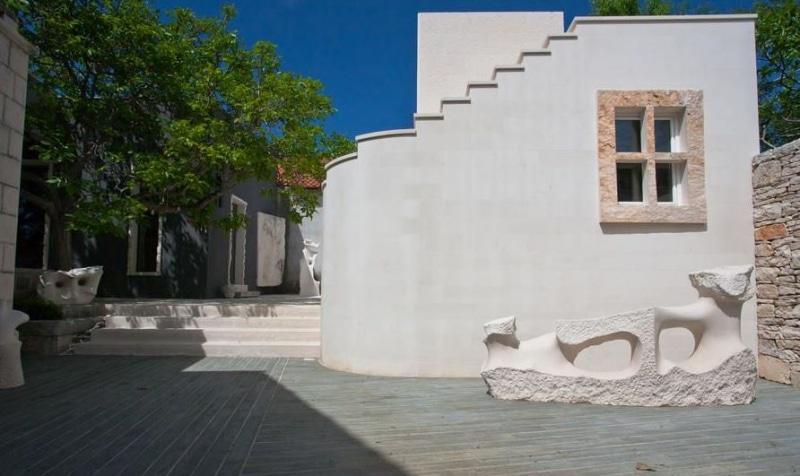
Removed from Unnamed collection
Jaksic Gallery 
Nestled within a charming family yard, the Jakšić Gallery is a treasure trove of artistic wonders. Each corner of this gallery tells a story, as it showcases the creative talents of the Jakšić family. You'll be mesmerized by the vibrant paintings of Dina Jakšić, a doctor of art whose work speaks volumes. Her use of color and texture invites viewers into a world of imagination. Then there's Ida Jakšić, whose exquisite jewelry crafted from semiprecious stones and silver is nothing short of stunning. Each piece feels like a small, wearable masterpiece. As you wander through, don't miss the impressive stone sculptures crafted by Lovre Jakšić. His skill in transforming stone into lifelike forms is awe-inspiring. The gallery itself, both inside and out, is a testament to the craftsmanship of Dražen Jakšić. His stonemasonry workshop not only created the gallery's architecture but also designed many of the unique stone furniture pieces that make this place one-of-a-kind. These Brač stone creations are not just functional but are works of art in their own right. Visiting the Jakšić Gallery is more than just a visual experience; it's a chance to connect with the island's rich artistic heritage. The gallery's location on Brač Island adds to its allure, as the island is known for its stunning landscapes and historical charm. While you’re there, take a moment to soak in the tranquil surroundings and perhaps even chat with the artists themselves. Their passion and dedication to their craft are truly inspiring.
Map
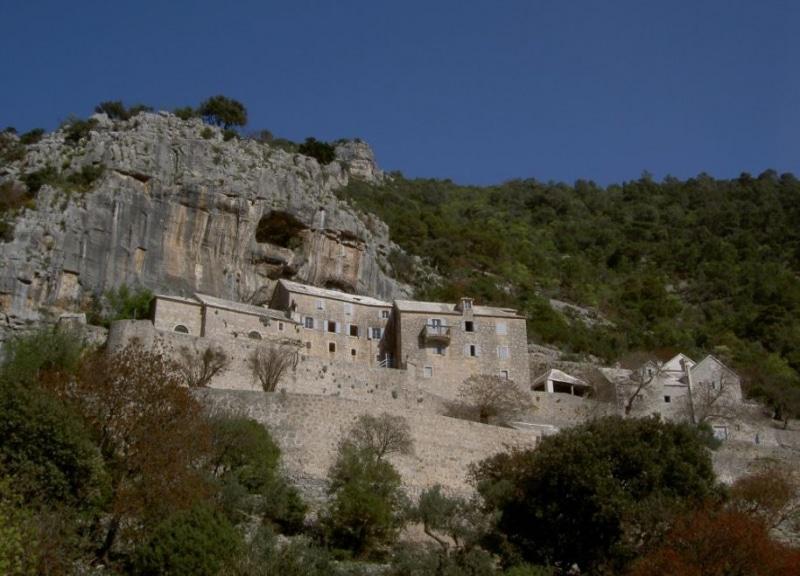
Removed from Unnamed collection
Blaca Monastery and Vidova Gora 
After meeting up with our local guide and a quick transfer, we set off on foot down the southern slopes of the island. It's a gentle 40-minute walk that leads us to a remarkable 16th-century monastery. This sacred site, built by Glagolitic priests fleeing from the Turks, nestles under a vast rock surrounded by pristine nature. The history here is captivating; it was once a respected center for astronomy. After exploring the museum, take a moment to unwind in the serene natural surroundings, listening to the harmonious sounds of the island. We also stroll past the quaint, abandoned village of Dragovode, where children once trekked daily to school in nearby Blac. It's like stepping back in time. From there, we continue to the island's highest point: Vidova Gora, standing proudly at 778 meters. This peak offers sweeping views over the islands of Hvar and Vis, and on a clear day, you might even spot Italy! It's a special place to pause and take in the breathtaking scenery before heading back to Supetar. Brač is an island that beckons with its unique blend of history and natural beauty. Don't miss the opportunity to experience its charm firsthand! Whether you're a history buff or a nature lover, there's something here for everyone.
Map
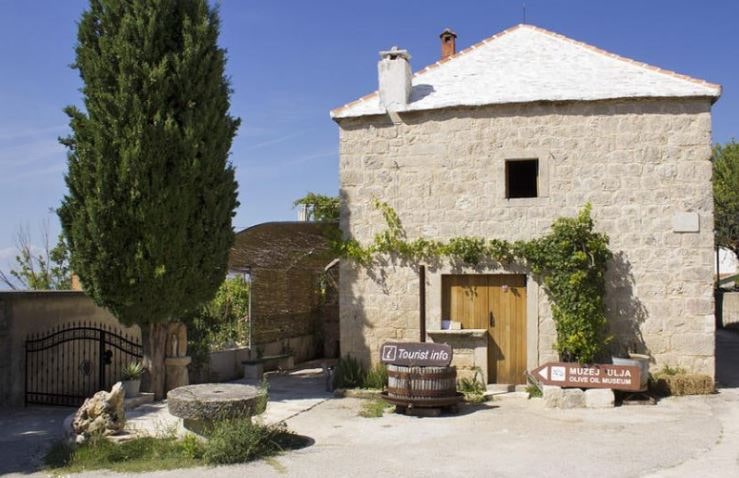
Removed from Unnamed collection
Olive Oil Museum 
Welcome to the charming island of Brac, where the Museum of Olive Oil in Skrip takes you on a fascinating journey through the traditional olive oil production process. Nestled in this picturesque locale, the museum showcases an array of historical tools and equipment: from the classic olive mill and press to the spindle for tightening the press screw, along with bags and a fireplace for heating water. These artifacts paint a vivid picture of the past methods used to produce and store this liquid gold. Adding a splash of artistry to the experience, the museum also features captivating paintings by the talented academic painter Hana-Marta Jurčević Bulić. You'll also find sculptures crafted by the skilled Đani Martinić, which creatively depict the diligent workers in the oilery, offering visitors a unique glimpse into the lives of those who once toiled here. The story of this oilery begins in 1864, when the Krstulović family established it in the quaint town of Skrip. Fast forward to the early 20th century, and the oilery saw an upgrade when Kruno and Mandica Krstulović acquired a new "Thomas Holt" olive press from Trieste. This innovation propelled the family business forward until 1963, when the oilery ceased operations due to the emergence of hydraulic press technology. However, the legacy was far from forgotten. In 2013, Kruno Cukrov, the grandson of Kruno Krstulović, along with his family, took on the ambitious task of restoring the old oilery. By July of that year, the site had transformed into the Museum of Olive Oil, officially opening its doors to the public. Today, it stands as a proud historical and cultural monument, celebrating the rich heritage of olive oil production on Brac. While you're on the island, don't miss the chance to explore Skrip itself, the oldest settlement on Brac, where ancient stone houses and narrow streets whisper stories from centuries past. It's the perfect backdrop to complement your visit to the museum.
Map
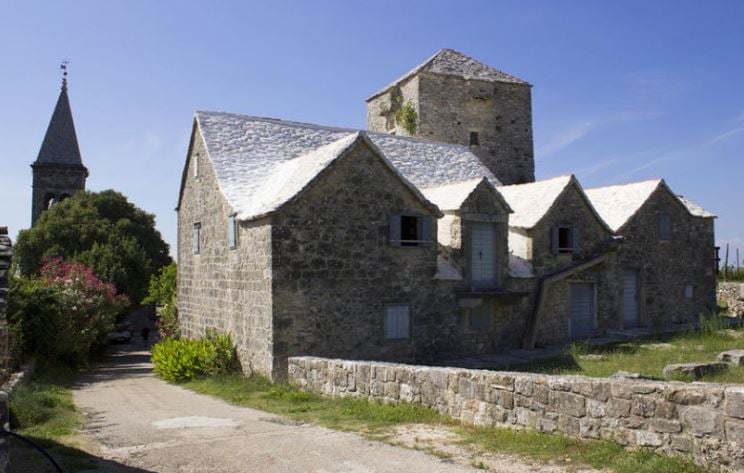
Removed from Unnamed collection
Museum of The Island of Brac 
Exploring the island of Brač is like flipping through the pages of a living history book. In Škrip, the island's oldest settlement, the past feels almost palpable. Picture this: ancient Illyrian town walls dating back to 1400 BC, once proudly standing here, later gave way to a Roman mausoleum. Fast forward a few centuries, and a formidable structure known as the Radojković Tower rose, serving as a defensive stronghold. Today, this very spot houses a museum that beautifully encapsulates the island's rich legacy. Stepping inside, you'll encounter fascinating exhibits from the Kopačina cave, ancient Roman tombstones, and even sea charts that hint at the stories of seafarers from long ago. The museum also showcases a variety of folk handicrafts, offering a glimpse into the everyday lives and creativity of the island's inhabitants. It's no wonder this gem of historical and cultural heritage draws visitors from near and far. The museum isn't just a static collection of artifacts; it's a vibrant narrative that invites you to ponder the lives of those who walked these lands before us. While you're there, don't miss the chance to explore the nearby olive groves and vineyards. They're a testament to the island's enduring relationship with the land and offer a scenic backdrop to your historical journey. Whether you're a history buff or just someone who appreciates a good story, Škrip promises an unforgettable experience that bridges the past and present seamlessly.
Map
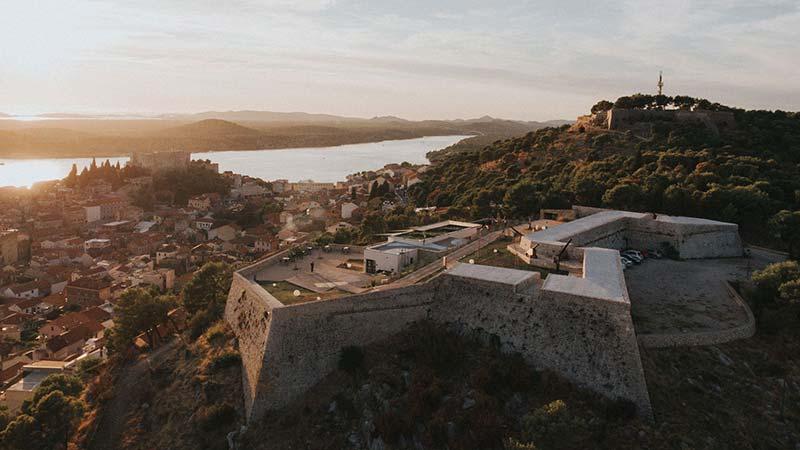
Removed from Unnamed collection
Barone Fortress 
Nestled in the historic heart of Šibenik, the Barone Fortress stands as a testament to the city's resilient spirit during the Cretan War. Built swiftly before the arrival of the Ottoman army, this fortress offers a unique glimpse into the past with the help of extended reality technology. Imagine walking through its ancient corridors while witnessing the sights and sounds of 17th-century Šibenik come vividly to life. It's like stepping into a time machine that revives the characters and scenes from that era. Commissioned by Baron Christophe Martin von Degenfeld, the fortress was a strategic move to strengthen the city's defenses. Initially constructed as a small fortress, or ridotto, it achieved its final form in 1659 under the guidance of governor-provveditore Antonio Bernardo. For history buffs and tech enthusiasts alike, this site is a real treat. The panoramic views from the fortress are breathtaking, offering a sweeping vista of the city and the sparkling Adriatic Sea. Don't forget to explore the interactive exhibits that provide fascinating insights into the fortress's storied past. Whether you're a history enthusiast or just looking for a unique adventure, the Barone Fortress promises an unforgettable experience.
Map
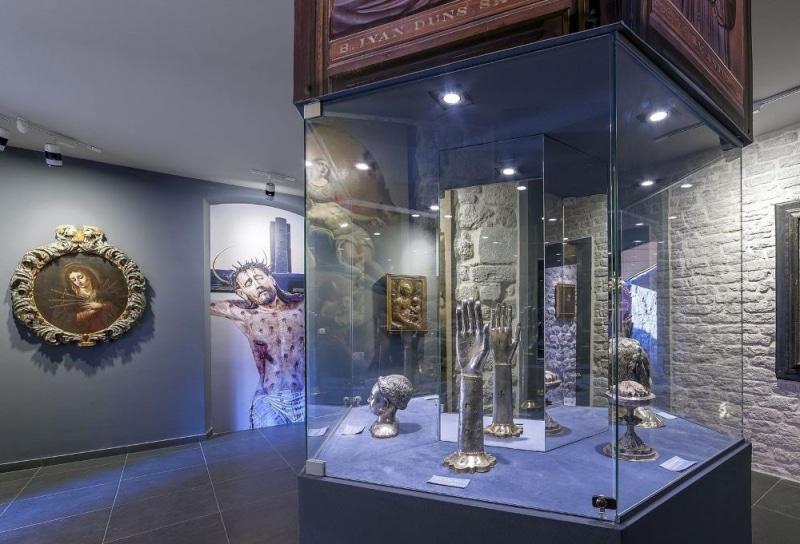
Removed from Unnamed collection
Museum of St Francis 
Nestled within the historic walls of the St. Francis Monastery in Šibenik, the Museum of St. Francis offers a captivating blend of history and art. Here, the Franciscan Conventual monks have left a legacy that stretches back centuries, showcased through an impressive collection of priceless artworks. This museum isn't just about observing; it's an interactive experience that combines education with exploration. As you wander through the monastery's library, you'll discover why it's ranked among Croatia's top five heritage libraries. This treasure trove houses an impressive array of incunabula, codices, and parchments, each telling a story of its own. Among these gems is the "Šibenik Prayer," a tribute to the Croatian language, penned in Latin script around 1375. It's a rare glimpse into the literary past that continues to resonate today. Šibenik itself is a charming coastal town, rich with history and stunning architecture. Don't miss the chance to explore its cobblestone streets and enjoy the breathtaking views of the Adriatic Sea. The town's ambiance is a perfect complement to the cultural immersion you'll experience at the museum.
Map

Removed from Unnamed collection
Lovrecina Beach 
Nestled on the northern coast of the stunning island of Brač, Lovrečina Beach is a true gem waiting to be discovered. Positioned between the charming towns of Postira and Pučišće, this beach is famous for its expansive sandy shores and captivating archaeological sites. Imagine the thrill of standing where history whispers its secrets: the remnants of the St. Lawrence basilica, dating back to the 5th and 6th centuries, can be explored here. Every year on August 10, local pilgrims from nearby areas gather to honor the feast day of St. Lawrence, adding a touch of cultural richness to your visit. Be sure to pack your snorkeling gear, as the crystal-clear waters offer a mesmerizing underwater world teeming with vibrant marine life. Nearby, quaint cafes serve delightful Croatian cuisine, perfect for a leisurely lunch after a morning of exploration. Whether you're a history buff, a sun seeker, or a foodie, Lovrečina Beach promises a delightful experience for all.
Map
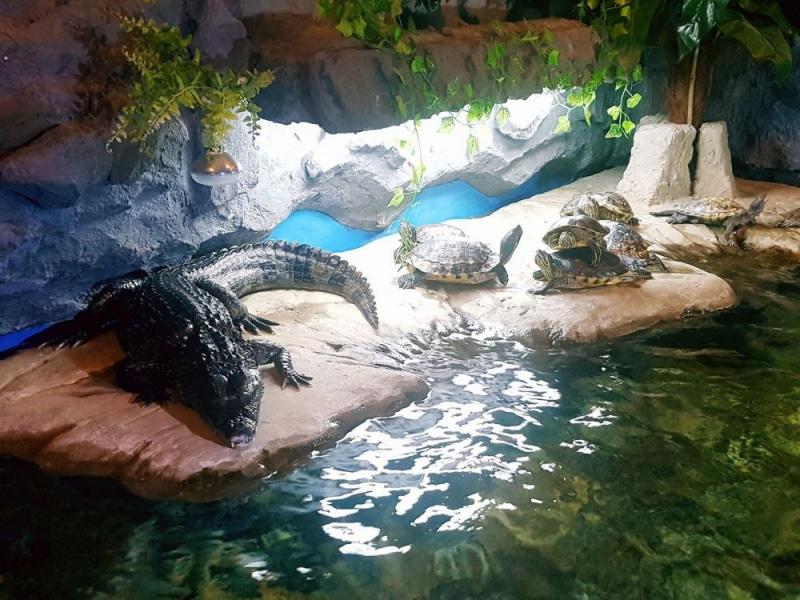
Removed from Unnamed collection
Aquarium Terrarium Sibenik 
Aquarium Šibenik offers a captivating journey into the wonders of the sea and seabed, perfect for families looking for a memorable day out. Nestled in the heart of the old city, it's just a stone's throw away from the iconic Cathedral of St. James. Housed in a charming, traditional Dalmatian stone building, this aquarium is a delightful blend of history and marine life. Spanning over 200 square meters, Aquarium Šibenik features 20 aquariums showcasing an impressive variety of Adriatic and tropical fish, along with vibrant marine plants. It's a mesmerizing spectacle that brings the ocean's beauty right to you. After exploring the aquatic displays, don't miss the chance to stop by the souvenir shop. Here, you'll find a treasure trove of authentic keepsakes that celebrate the essence of the sea and Dalmatia. Many of these souvenirs are crafted by talented local artists, offering a unique piece of the region to take home. While you're in the area, consider exploring the nearby Cathedral of St. James, a UNESCO World Heritage site. Its stunning architecture and rich history make it a must-see. Plus, the surrounding old town is full of quaint cafes and hidden gems waiting to be discovered.
Map
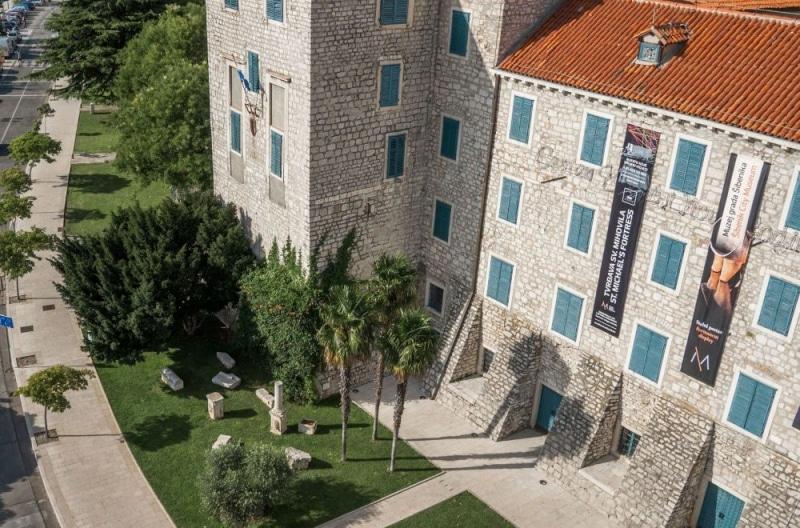
Removed from Unnamed collection
Sibenik City Museum 
If you're ever strolling through the charming streets of Šibenik, a stop at the Sibenik City Museum is a must. Established back in 1925, this gem is just a stone's throw from the Cathedral, nestled in what was once the Prince's Palace. Imagine this: between the museum and the Bishop's Palace, you can still find a city gate from the 16th century, a whisper of the Renaissance era. As you wander through the gothic passage on the ground floor's southern wing, you'll spot the city coat of arms proudly displayed, featuring none other than St. Michael, the city's patron. The museum is a treasure trove, with its archaeological, cultural-historical, and ethnographic departments offering a fascinating peek into the past. It plays a crucial role in collecting, preserving, and showcasing the rich cultural heritage of the Šibenik region. The collections here boast an impressive array of artifacts, each telling its own story about Šibenik's history, stretching from ancient times to today. While you're there, take a moment to appreciate the architecture of the museum itself. The blend of Gothic and Renaissance elements creates an atmosphere that feels like stepping back in time. And don't miss the chance to chat with the friendly staff; they're passionate about the history and always eager to share intriguing insights. Whether you're a history buff or just curious, the Sibenik City Museum offers a delightful journey through time.
Map
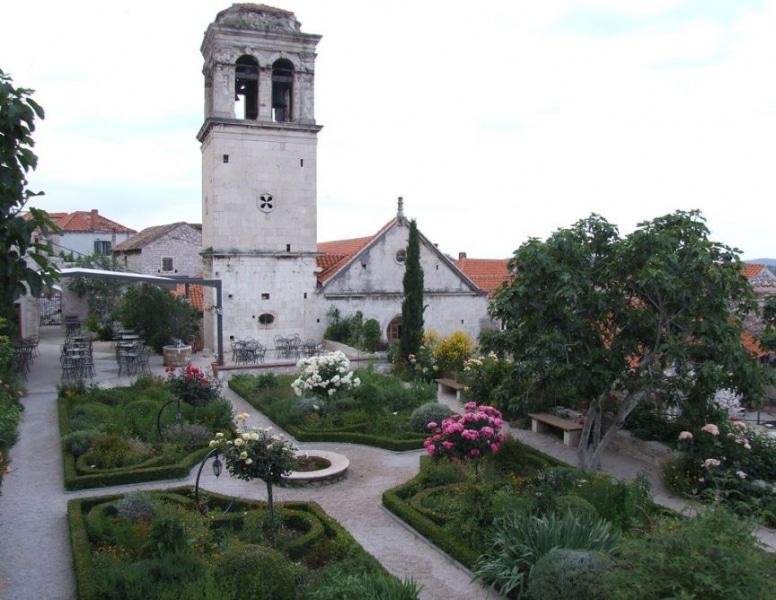
Removed from Unnamed collection
Mediterranean Monastery Garden of St. Lawrence 
The Mediterranean Monastery Garden of St. Lawrence is a hidden gem that came back to life in 2007 after being forgotten for a century. Nestled within the St. Lawrence Monastery, it was beautifully restored under the guidance of architect Dragutin Kiš. This garden is one-of-a-kind in Croatia, offering a serene escape filled with fragrant Mediterranean herbs and a central water source that adds a tranquil touch. Wandering through this garden feels like stepping into a peaceful sanctuary. The air is infused with the aromatic scents of rosemary, lavender, and sage, creating a calming atmosphere. It's a perfect spot for those seeking a moment of reflection or simply wanting to enjoy nature's beauty. Interestingly, the garden also serves as a reminder of the area's rich history and the dedication to preserving cultural heritage. It's a lovely place to relax and soak in the serene surroundings, making it a must-visit for anyone exploring the region.
Map
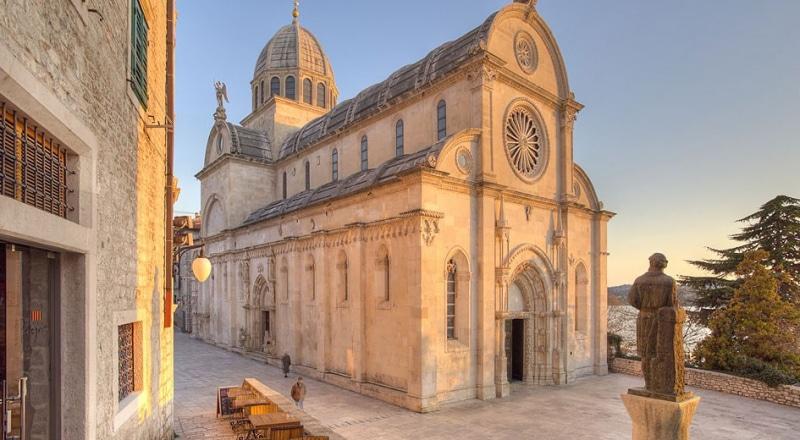
Removed from Unnamed collection
St. James Cathedral 
The Cathedral of St. James in Šibenik stands as a testament to Croatia's rich architectural heritage, earning its place on the UNESCO Cultural World Heritage List in 2000. This stunning masterpiece took over a century to construct, with work spanning the 15th and 16th centuries. What makes this cathedral so remarkable is that it's crafted entirely from stone, a rare feat for its time. The brilliant minds behind this architectural gem were Juraj Dalmatinac, also known as Georgius Mathei Dalmaticus, and Nikola Firentinac, or Niccolò di Giovanni Fiorentino. They began the cathedral in the Gothic style, later transitioning to the Renaissance style to complete it. Walking through the cathedral, you can't help but admire its intricate details and the seamless blend of styles. The stonework is astonishing, with every corner revealing a new facet of artistic brilliance. It’s truly an experience to see how the Gothic elements harmonize with the Renaissance touches, creating a unique fusion that’s both grand and graceful. Besides being an architectural marvel, the cathedral is a peaceful retreat from the bustling streets of Šibenik, offering a moment of quiet reflection amidst your travels. If you’re planning a trip to Croatia, this is one place you absolutely cannot miss.
Map
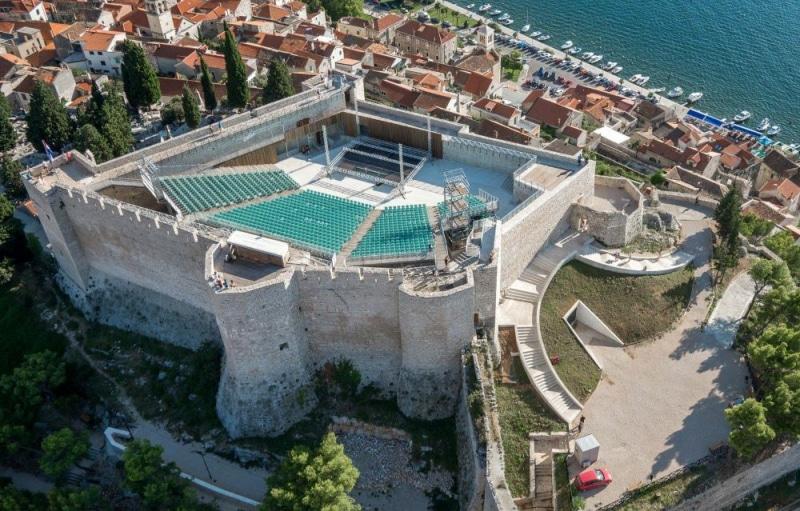
Removed from Unnamed collection
Michael's Fortress 
Perched atop a steep, rocky hill, St. Michael's Fortress offers breathtaking views of the numerous islands scattered across the Šibenik archipelago and the charming medieval town below. This fortress has been a stalwart guardian throughout history, serving as the centerpiece of the city's fortification system. Šibenik, known as the oldest native Croatian town on the Adriatic, blossomed within the protective embrace of its walls. The town was first documented on Christmas Day in 1066, famously hosting Croatian King Petar Krešimir IV. Many of the fortress's ramparts and bastions, which have stood the test of time, date back to the late Middle Ages and Early Modern Age. In 2014, the fortress underwent a revitalization, transforming it into a dynamic cultural venue with a unique open-air summer stage. This stage now hosts a variety of events, from concerts to theater performances, making it a lively meeting point for locals and tourists alike. Adding to the allure of Šibenik, the town boasts a rich blend of architectural styles, with its narrow cobblestone streets and stone houses that seem to whisper stories of ages past. Visitors can explore the nearby Cathedral of St. James, a UNESCO World Heritage site, renowned for its stunning stone carvings and intricate design. Whether you're a history buff or simply in search of stunning vistas, St. Michael's Fortress promises an unforgettable experience.
Map
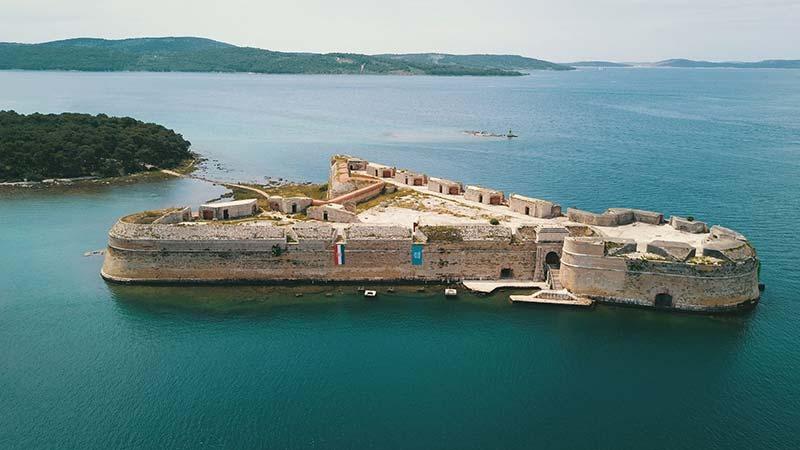
Removed from Unnamed collection
St Nicholas Fortress 
St. Nicholas' Fortress, perched at the entrance to St. Anthony's Channel in Šibenik, is a remarkable piece of Renaissance architecture. This Venetian fortification stands as a testament to world architectural heritage. It was built on the islet of Ljuljevac, which was once home to the Benedictine monastery of St. Nicholas, the namesake of the fortress. Construction kicked off in 1540, following the fall of Skradin to the Ottomans. The Venetians, recognizing the strategic importance of Šibenik port on the Adriatic's eastern coast, followed Gian Girolamo San Micheli’s design to bolster its defenses. Today, St. Nicholas' Fortress is more than just a historical monument; it's a journey back in time. As you wander through its ancient corridors, you can almost hear the echoes of the past, the hustle and bustle of soldiers preparing for battle, and the serene chants from the long-gone monastery. The fortress also offers stunning views of the sea and surrounding landscape, making it a perfect spot for history buffs and nature lovers alike. For those seeking a unique adventure, exploring the fortress by kayak is a must-do, allowing you to appreciate its grandeur from a different perspective.
Map
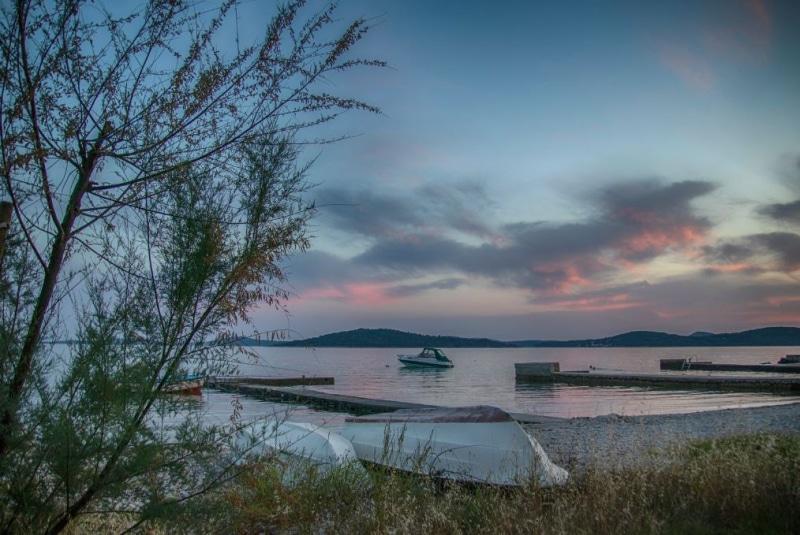
Removed from Unnamed collection
Jadrija Beach 
Jadrija, a charming beach and weekend getaway established back in 1921, holds the crown as the iconic beach of Šibenik. With its colorful cabins lining the shore, it's an ideal spot for a day trip. The journey to Jadrija is an experience in itself: hop on a boat and let the waves carry you through the stunning Šibenik archipelago. As you glide over the water, you'll also catch sight of the majestic St. Nicholas's Fortress, a sight that's sure to capture your imagination. Once you arrive, the beach's laid-back atmosphere invites you to relax and soak up the sun. For those who crave a bit of adventure, the waters are perfect for swimming and snorkeling. And if you're a fan of photography, the vibrant cabins provide the perfect backdrop for your holiday snapshots. Don't forget to sample some local Croatian cuisine from the nearby eateries, offering fresh seafood that's as delicious as it is authentic. Whether you're looking to unwind or explore, Jadrija offers a delightful escape that combines natural beauty with a touch of history.
Map
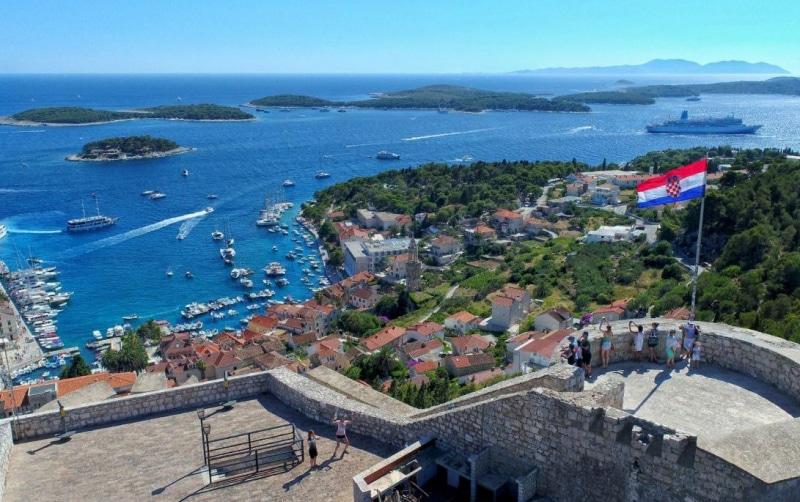
Removed from Unnamed collection
Fort Fortica 
If you stroll north from the square, passing through the grand main city gate, known locally as Porta di datallo or the Gate of Dates, you'll find yourself ascending the stairs through the charming old part of the city. This area is a delightful maze of palaces built in the 15th and 16th centuries. As you wander through the narrow bends, the air is filled with the refreshing scents of Mediterranean plants. Your journey will lead you to Hvar's majestic fortress, Fortica, affectionately called Španjola by the locals. Constructed at the start of the 16th century under Venetian rule, it was given a fresh lease of life in 1579. Today, the fort is a treasure trove of history, showcasing a collection of ancient amphorae and exhibits from both antiquity and the Middle Ages. But beyond its architectural marvels, the real treat is the breathtaking panoramic view it offers. From here, you can feast your eyes on the stunning cityscape of Hvar, its picturesque surroundings, and the enchanting Pakleni Islands. A fun fact about the fort: it was originally built as a protective fortress against Turkish raids, making it not just a scenic spot but a place steeped in history. The view from the top is especially magical at sunset, when the sky transforms into a canvas of pinks and oranges, casting a warm glow over the islands. It's a perfect spot for photography enthusiasts or anyone wanting to capture a piece of Hvar's magic.
Map
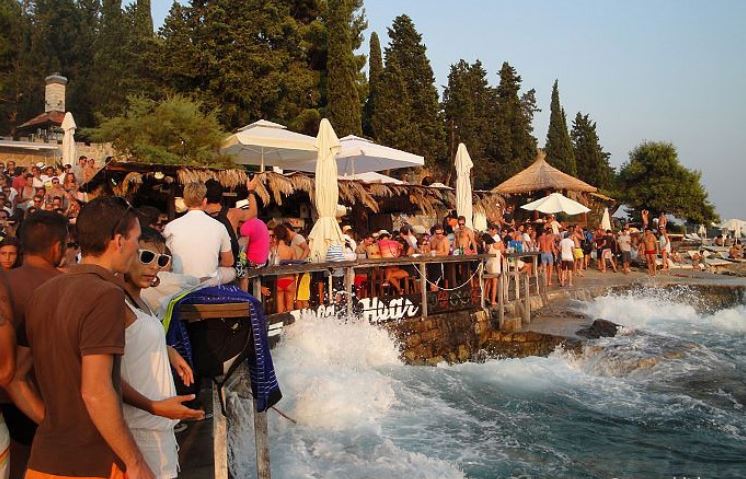
Removed from Unnamed collection
Hula Hula Beach 
If you're on the hunt for some lively entertainment, look no further than Hula-Hula Beach. Nestled just a short stroll from the chic Hotel Amfora, this buzzing spot offers more than just a dip in the sea and a refreshing cocktail. It's a place where the rhythms of world-famous DJs will have you up on your feet, dancing to the beat. Located on the western edge of Hvar Town, Hula-Hula is a mere five-minute seaside walk from Hotel Amfora and a leisurely fifteen-minute walk from the town center. Hula-Hula is perfect for those seeking a full day of relaxation and fun. Picture yourself lounging on a sunbed under a breezy umbrella, with the option to rent both for ultimate comfort. When hunger strikes, Bubba Gump restaurant on-site serves up a delightful mix of light bites, Thai dishes, and fresh seafood. Plus, the bar boasts a fantastic selection of cocktails and tropical drinks to quench your thirst. One of the highlights at Hula-Hula Beach Club is its famed after-beach parties. These lively events kick off at 5 PM and continue until the sun dips below the horizon, painting the sky with magical colors. Trust me, you won't want to miss witnessing a summer sunset from this perfect vantage point. It’s an experience that will make your holiday unforgettable. Did you know that Hvar is known for having over 2,700 hours of sunshine each year? That makes it one of the sunniest spots in Europe, ensuring plenty of bright days to enjoy all that Hula-Hula has to offer.
Map
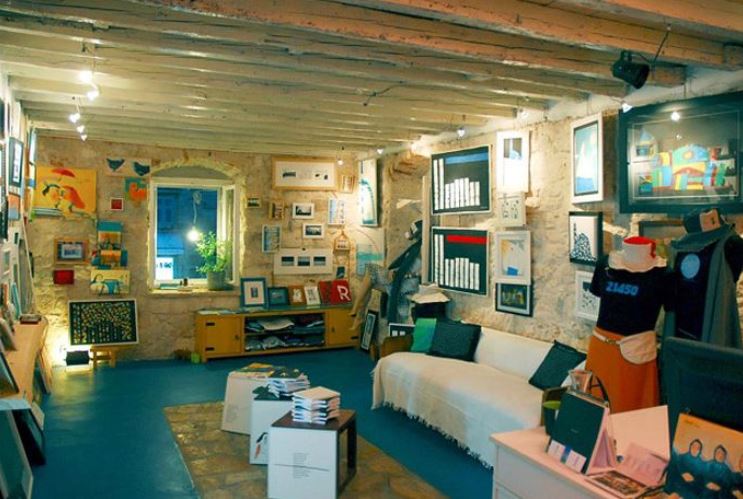
Removed from Unnamed collection
Hvaroom Gallery 
Tucked away like a hidden gem, Hvaroom is both an art studio and a cozy living space, where creativity flows as freely as the Adriatic breeze. This charming gallery showcases the works of talented artists like Maja Jelušić and Ana Kolega, with recent exhibitions featuring stunning photography by Ivo Vučetić, Filip Bubalo, and Marko Jelušić. Beyond the captivating paintings and sculptures, you'll also find an intriguing selection of textiles, unique postcards, and books that capture the essence of the island's artistic soul. Nestled in a stone Mediterranean house, this picturesque gallery is part of a 300-year-old family legacy. It's semi-detached from one of Europe's oldest theaters and the historic Arsenal, a former Venetian warehouse. The spirit of the past lingers here, much like the warmth of a grandmother's embrace. Speaking of warmth, don't miss the Belvedere terrace bar, just two floors above. Once the original location of Hvaroom, this spot now serves as an additional exhibition space, offering yet another layer to your cultural adventure. Over its thirteen-year journey, Hvaroom has become a beloved meeting place for art enthusiasts and curious travelers alike, offering a variety of artful creations inspired by the island’s hidden treasures. The gallery's interior is a delightful blend of art, design, and life's simple joys. It's a studio and gallery, a store and a room... all wrapped into one unforgettable experience. Whether you're an art aficionado or a curious wanderer, you'll find something to love in this vibrant, artistic enclave.
Map
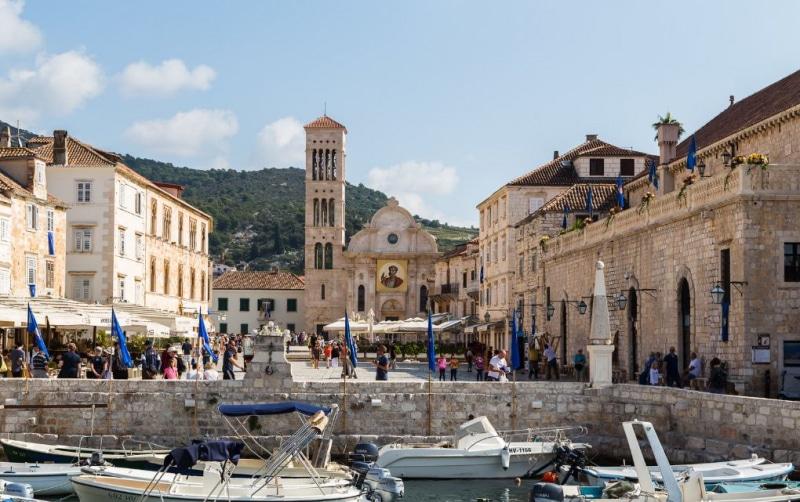
Removed from Unnamed collection
Square & Cathedral of St. Stephen 
When you find yourself in Hvar, every winding street seems to usher you toward Hvarska pjaca, the heart of the city’s public and social life. It's the largest square in Dalmatia, and you can feel its pulse as locals and visitors mingle. On the eastern side stands the Cathedral of St. Stephen, a magnificent structure with roots tracing back to a 6th-century early-Christian church. It took on its current form during the 16th and 17th centuries. The Cathedral honors St. Stephen, a pope and martyr, who is the guardian of both the Diocese and the city itself. The bell tower of this Cathedral, along with others like those of St. Mark, the Franciscan monastery, and the ruins of St. Venerande, are celebrated as the most exquisite in Dalmatia. Inside the Cathedral, the treasures continue. It houses an array of valuable items and stunning paintings by artists such as Stefano Celesti, Palma Junior, and the Spanish artist Juan Boschettus. The most famous piece here is undoubtedly the Madonna, a proto-Venetian masterpiece dating back to 1220, making it one of Dalmatia's oldest works of art. Adjacent to the Cathedral is the Episcopal Palace, which has been home to a fascinating collection since 1963. Here, you'll find sacred vessels, archival documents, ancient books, and intricately designed liturgical vestments. It’s a real treat for history buffs and art enthusiasts alike. And when you've soaked in all the culture, take a moment to enjoy a coffee at one of the charming cafes lining the square, where you can watch the world go by and feel the unique blend of history and modern life that defines Hvar.
Map
 FiveLands Travel
FiveLands Travel 
 Croatia
Croatia